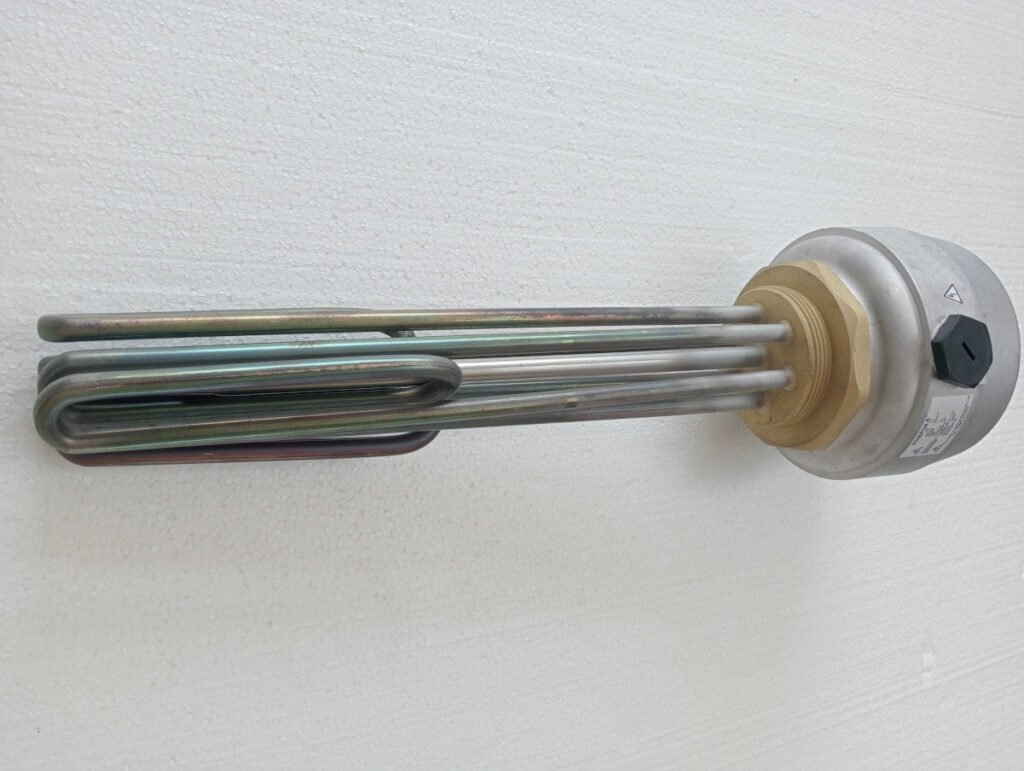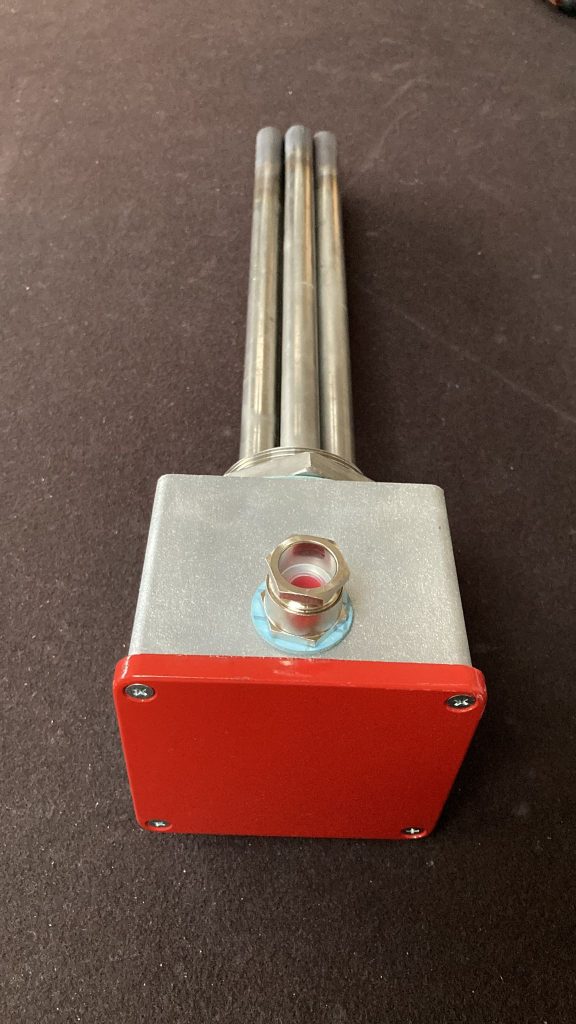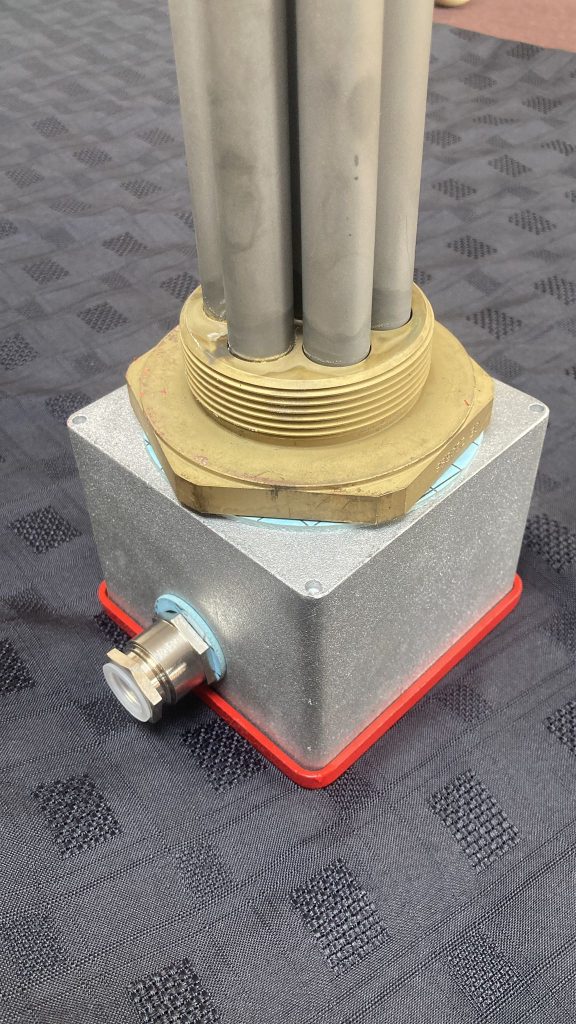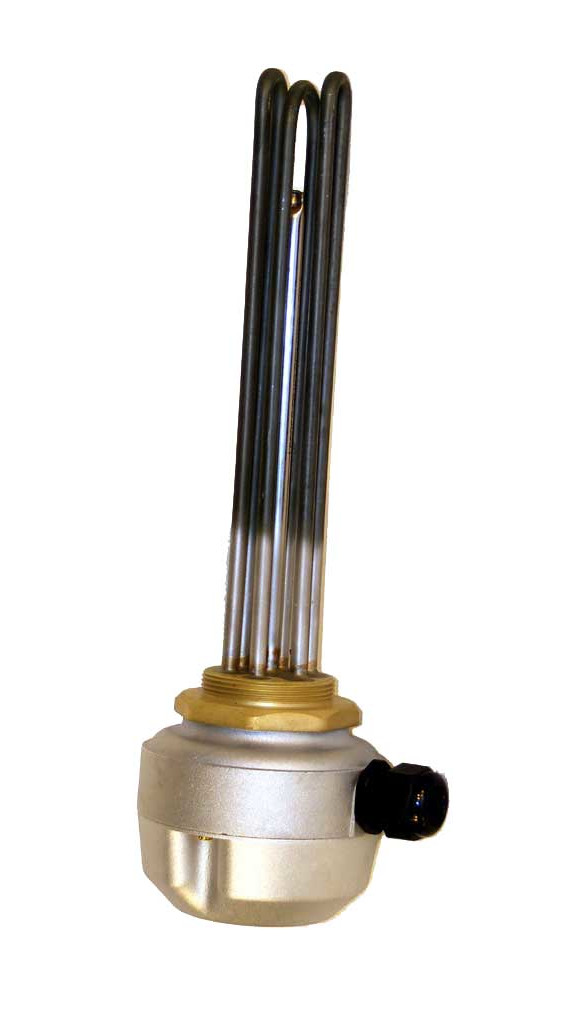
Immersion heaters raise the temperature of fluids, usually water. In most cases, they consist of an element, made of a conductive metal that nevertheless presents a resistance to the electricity that flows through it. The element can be exposed to the liquid or encased inside another material.
Most people, when they refer to an “immersion heater”, mean a domestic electrical system for heating up household running water, for a bath for example. But this site is about heaters that are used for commercial purposes. These include:
- regulation of fuel temperatures (eg to stop fuels from thickening at low temps)
- chemical- and pharma-industry handling of ingredient and product temperatures
- brewing and food production (including actual cooking)
- plumbing and sewage (eg to stop pipes freezing)
Unlike domestic immersion heaters, which require only a few kilowatts of electricity, those used for such applications run up to thousands of kilowatts of power, and can be responsible for heating large volumes of fluid.



